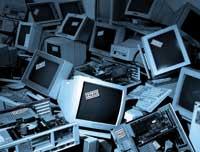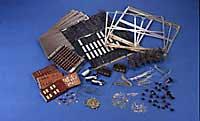Technological waste, the mark of innovation
2007/04/22 Rementeria Argote, Nagore - Elhuyar Zientziaren Komunikazioa

The environmental problems of the new technological tools are few. Just look at the numbers. For example, the production of a conventional computer requires an average of 240 kilos of fuel, 22 kilos of material (hundreds of different materials) and 1,500 liters of water. Therefore, in the productive process, a lot of enormous raw materials are used.
Although it has often been said that it is clean with respect to other industries, in view of these data, the technology tooling industry is only partly clean. In addition, in this industry, the biggest problem of contamination occurs after the use of the appliances. The contamination of the productive process is relatively easy to control by governments, but this control is more difficult after the use of the tool. And precisely there is the question.
However, the responsibility of this tool is, in principle, of the producer company. He will be responsible for the collection and subsequent transfer of the tool, in case its reuse is possible, where necessary, and in case its reuse is not possible, its dismantling and recycling.

However, normally, the consumer has the first obligation to take the device to the place that corresponds to him as is the Garbigune. And it is not a joke, because throwing where it is not needed can cause serious damage. According to the organization of the United Nations for the Environment, the waste of electronic devices contains at least seven hundred different components, some of which are harmful to the environment and even to human beings, such as lead, cadmium and lithium.
Global problem
In this organization, the amount of technological waste that is deposited worldwide has been quantified, but no specific data has been obtained: it is estimated that it is poured between twenty and fifty million tons approximately. And every year more trash is thrown. A year after buying a computer, it is old and obsolete for four years to use the programs they take out, etc. And the mobile phone is too, because the consumer changes mobile on average every three years (this does not mean that they last three years, of course).

Thus, the mountain of garbage is increasingly large. In addition, much of this garbage is taken from rich countries to the poorest. 80% is taken to Asia, especially to China. This transfer is not carried out within the law, so no concrete data can be available, but they consider that about 70% of the world's technological waste is taken to China. There it is reused to the extent possible, but inevitably generates serious environmental and health problems.
The situation is serious, here and around the world. There will be a solution, of course, but, for the moment, it has no aspect of improvement.
Published in 7K.

Gai honi buruzko eduki gehiago
Elhuyarrek garatutako teknologia






